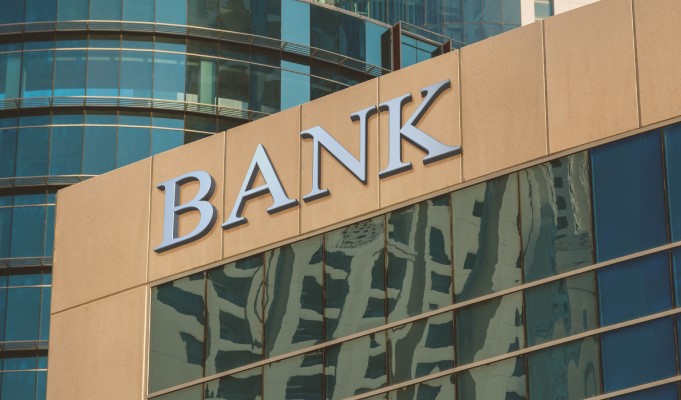
What Happened?
In the simplest of terms, we’re experiencing the confidence-shaking effects of old-fashioned bank runs. History is littered with many of these occurrences as far back (in the US) as 1893, 1907, the 1930s, and as recently as IndyMac, Washington Mutual, and Wachovia with the financial crises in 2008-2009. And this phenomenon is certainly not unique to the US as many countries with similar banking models have endured this phenomenon as much as or even more frequently than our country. So while it is unsettling, it is certainly not unique.
In the past week, we’ve witnessed three banks’ failures: Silvergate, Silicon Valley, and Signature Bank. All three failures were the result of classic bank runs with large amounts of deposits leaving rapidly and all at once, which effectively “breaks” a fractional banking model where most deposits are not held as cash in a safe but lent out to borrowers.
What is different from the 2008 financial crisis is there has not been a credit issue with the banks’ collateral held against the deposits (the failures have not been from failed loans). Instead, these losses are largely the result of the inherent interest rate risks in the banks’ investment portfolios. In other words, the US treasuries the banks hold on their balance sheet currently trade at a loss due to the rapid rise in interest rates since the bonds were purchased. When banks were forced to sell these positions to satisfy depositors’ substantial demand for cash, they were forced to take losses, effectively wiping out equity value.
It's also important to note that US Treasuries are much more stable and secure than questionable mortgage back securities held on the balance sheets of banks back in 2008 and 2009. In fact, the losses being incurred are effectively paper losses (before needing to be sold) as these bonds would eventually mature to their par value. In addition, the profile and concentration of the type of depositors were also ripe for a run as an estimated 90% of depositors at Silicon Valley Bank, for example, were above the FDIC $250,000 insurance limit. So the original government backed security blanket of $250,000 provided little to no protection for most large customers.
What caused the initial rush to pull cash all at once? That’s where emotion comes in. It’s impossible to know or even speculate on the initial spark that caused the fire but once it became clear that “other people” were getting out, phones and laptops were lit up with wire transfer requests to larger and more established banks and the small brushfire quickly became an inferno engulfing these institutions.
What Was the Government’s Response?
The US government quickly realized that providing a back stop and a confidence boost for depositors was critical to quell the emotional damage. The FDIC (Federal Deposit Insurance Corporation) used the ‘systemic risk exception’ to protect uninsured depositors in Silicon Valley and Signature Bank. Essentially deposits not covered by the banks’ assets will be covered by the FDIC’s deposit insurance fund. This means depositors in the banks will be made whole, although it does nothing for the equity value lost by shareholders. In addition to this measure, the Federal Reserve and Treasury Department announced a lending facility (the Bank Term Funding Program – BTFP) to help prevent further issues. The program will provide advances against eligible collateral (Treasuries and Agency securities) for up to a year and, importantly, will value those bonds at par. This will help prevent other banks from having to realize losses on their securities portfolios to meet deposit redemptions, should they arise.
Banks vs. Custodians
As investment portfolios consist of equities, fixed income, cash, and many other asset classes, we think it’s critical to remind clients of the difference between cash deposits and investment securities. Bank depositors are protected up to the FDIC limit of $250,000. Beyond that amount, depositors’ cash is at risk – subject to this week’s changes in regulations. Deposits held at banks are vastly different than stocks and bonds held in investment accounts at custodians (like Charles Schwab, Fidelity, etc.) because those assets are being “held” on the client’s behalf and are NOT a part of the custodian’s balance sheet. If a custodian with a bank were to encounter financial distress, the securities held on behalf of customers are not subject to seizure or a fire-sale as these assets are completely separate from the custodian’s bank assets. If a custodian were to fail, all securities in a client’s investment accounts would most likely transfer to another account at a different custodian, similar to how a gold coin could be transferred from one safety deposit box to another safety deposit box.
What Should People Do to Protect their Wealth?
In times like these, it’s important to remember a few of the key strategies we routinely employ when establishing and maintaining our clients’ wealth plans. It’s important to note however, these foundational principles aren’t new – we’re just being reminded of their value in times of financial stress.
- Manage Cash to FDIC Limits: As noted earlier, the FDIC insures deposits of up to $250,000 per account. For peace of mind, we recommend keeping deposits below these limits at one bank either by spreading the cash amongst different banks or alternatively, by investing in short term US treasury money market funds at a custodian. Treasury money market funds are not FDIC insured and are slightly less liquid (can be sold in a day) but do enjoy the de facto backing of the US government’s credit rating and usually pay a higher interest rate.
- Understand Your Allocation: It’s important to remember that mutual funds, ETFs, stocks & bonds are much more than just ticker symbols on a brokerage statement. Underlying these investments are people running corporations or government entities that have business models, balance sheets, and cash flows. This is why we believe a well-researched portfolio, consistently maintained, and aligned with a client’s goals provides the best chance for the almost universal goal: financial peace of mind.
Final Thoughts:
Being fearful in uncertain times like these is only natural, certainly understandable, and should not be dismissed. Quite frankly, there is no guarantee that other banks will not encounter similar problems in the coming weeks. Market upheaval is a fact of life and presents buying opportunities for disciplined investors to ultimately benefit from. As stomach-churning as this past weeks’ events may be, it’s important to stay mindful of the bigger picture and historical context to avoid the damaging effects of knee-jerk and sometimes irreversible decisions. By combining clear-headed analysis of the facts and daily vigilance on the latest developments with time-tested strategies, we’re confident we can successfully navigate this storm and the inevitable storms to come.
Published 03/20/2023
